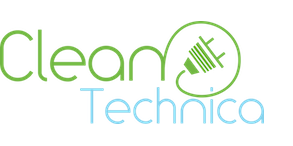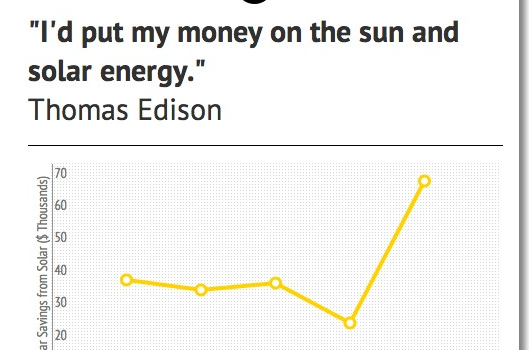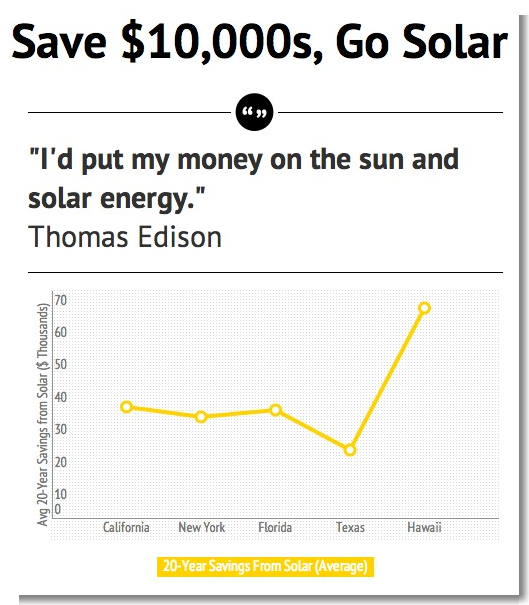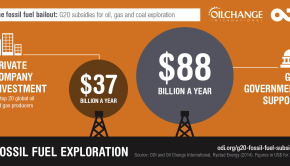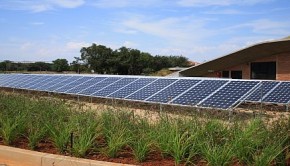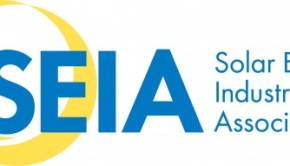What Is The Current Cost Of Solar Panels?
February 4th, 2014 by Zachary Shahan
If you’re considering solar, and you’re like most people, one of the first questions you may ask is: How much do solar panels cost? Solar is a great idea for many people, not only to cut their utility bills but also to reduce their dependence on their utility, while also cutting their own personal footprint. The cost of solar is one major element in the decision to go solar, however.
I can very easily answer the question “How much do solar panels cost?” (see below), but I think the real question you’re asking is “How much will it cost to put solar panels on my roof?” That’s a more complicated question to answer, but I’ll explain in more detail and provide some useful perspective on that in the article below.
How Much Do Solar Panels Cost Today?
Solar panels themselves are now a global product. There’s tremendous variation in the cost of solar panels based on the type and efficiency of the solar panels. However, the type of panels used for residential solar installations is quite standard and the costs are basically set globally. That cost has fallen tremendously within the past few years — they’re now about half the price they were in 2008, and about 100 times lower than they were back in 1977. The latest US Solar Market Insight report (from Q3) put the price at $0.70/watt. A report from REC Solar shows that the price in Q2 as a bit higher — about $0.73/watt. Still, the price is very low compared to 2008 or 2009, and insanely low compared to 2000.
How Much Do Solar Panels Cost… On My Roof?
But when you ask “How much do solar panels cost?,” what I think you really want to know is how much it costs to put solar panels on your roof, right?
The bulk of the price of going solar is now the “soft costs” (installation, permitting, etc.) rather than the solar panel cost. Again referencing the latest US Solar Market Insight report, the average installed cost of a residential solar panel system was $4.72/watt. However, prices vary tremendously by region. “Common residential system prices ranged from less than $3.00/W to just above $7.00/W,” the Solar Energy Industries Association writes. The total price of a system, of course, varies tremendously based on the size of your roof and your electricity needs.
So, the key is really just to get an initial quote and then get a closer look at your situation from a local installer, who can give you a more specific quote.

How Much Does It Cost To Go Solar? & How Much Will I Save?
But when it comes down to it, what you probably really need to know is how much it will cost you to actually go solar. And a related question would be how much you will save in the long run.
In many places now, you can go solar for $0 or close to $0 down through solar leasing companies or through simple bank loans. Then you’re just paying monthly payments like you would on a house, car, or college loan. However, in this case, your payments are likely to be less than the amount of money you’re saving on your electricity bill. So, really, you’re not paying any more than you’re already paying for electricity… you’re saving money!
Studies have found that the average solar homeowner will save about $20,000 over 20 years from going solar. In three of the four most populous states in the country, that 20-year total is actually $30,000. In Hawaii, it’s up above $60,000! And that’s just the average.
But, again, the financing options and the savings really depend on where you live and some personal circumstances (like how much you’re spending on electricity right now). So, what you really need to do is get a solar quote if you’re interested in finding out how much solar panels cost for you.
Keep up to date with all the hottest cleantech news by subscribing to our (free) cleantech newsletter, or keep an eye on sector-specific news by getting our (also free) solar energy newsletter, electric vehicle newsletter, or wind energy newsletter.
-
http://www.sunupzerodown.com/ Solar power
-
sheffezen
-
Havel
-
Ned
-
Andrew Zimmerman
-
ian
-
Bob_Wallace
-
A Real Libertarian
-
Bob_Wallace
-
A Real Libertarian
-
Bob_Wallace
-
A Real Libertarian
-
-
-
-
-
John Brian Shannon
-
patb2009
-
Kim Magnuson
-
Bob_Wallace
-
-
-
jules rosen
-
jules rosen
-
Frank T
-
Tired
-
-
Bob_Wallace
-
Bullfrog
-
Bob_Wallace
-
Bullfrog
-
Bob_Wallace
-
Bullfrog
-
Bob_Wallace
-
TonyEdwards2
-
jules rosen
-
TonyEdwards2
-
Cbish
-
TonyEdwards2
-
Burnerjack
-
Kim Magnuson
-
belay
-
Bullfrog
-
Michael
-
Bullfrog
-
Bob_Wallace
-
Louie
-
TonyEdwards2
-
Bob_Wallace
-
Louie
-
-
Dropandgiveme20
-
-
-
Me Oh My
-
DallasTexas
-
Bullfrog
-
Bullfrog
-
Bob_Wallace
-
Me Oh My
-
KR
-
Bob_Wallace
-
-
-
-
Techngro
-
http://fare.tunes.org/ Faré
-
A Real Libertarian
-
Bob_Wallace
-
-
-
Dropandgiveme20
-
-
james braselton
-
whammami
-
dcard88
-
Bob_Wallace
-
-
mearme
-
Bob_Wallace
-
-
Dave Nantz
-
Bob_Wallace
-
Burnerjack
-
Bob_Wallace
-
-
-
-
disqus_l4zSoQqrpI
-
Bob_Wallace
-
-
pvcalc
-
fudfighter
-
http://zacharyshahan.com/ Zachary Shahan
-
Tony Reyes
-
Jim Seko
-
Dropandgiveme20
-
Johnny tuenmo
-

